When Do Locusts Come Out Again
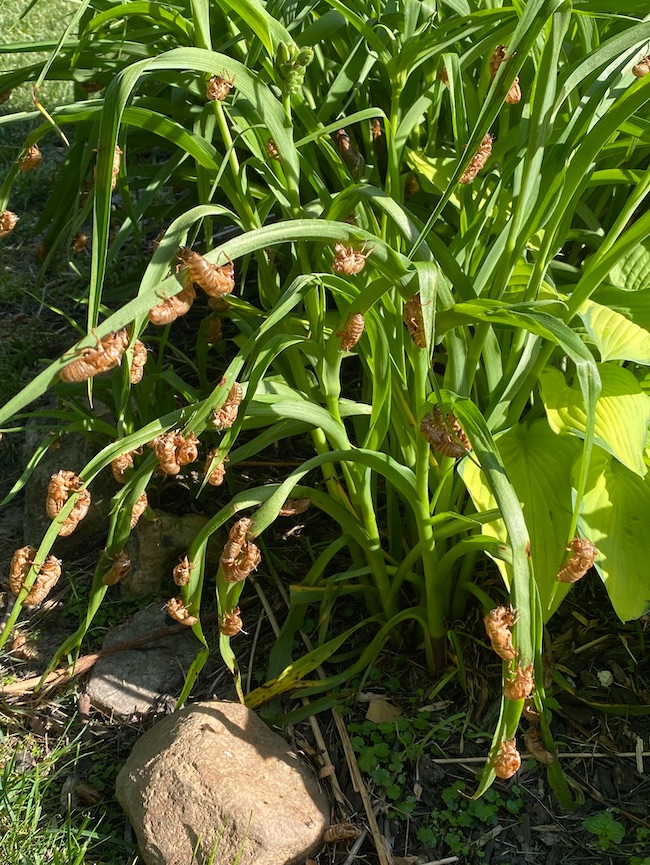
Citizen scientists are reporting the emergence of the Brood X cicadas happening right now. As of May 10, 2021, the Cicada Safari app shows thousands of reports from people spotting cicadas in their own yards. Some of the places seeing the nigh reports are around Washington, D.C.; Bethesda, Maryland; Knoxville, Tennessee; and Cincinnati, Ohio. Fifty-fifty places as far northward and westward equally Detroit, Chicago and St. Louis have had sightings. If you live inside these areas and haven't seen or heard them yet, merely wait.
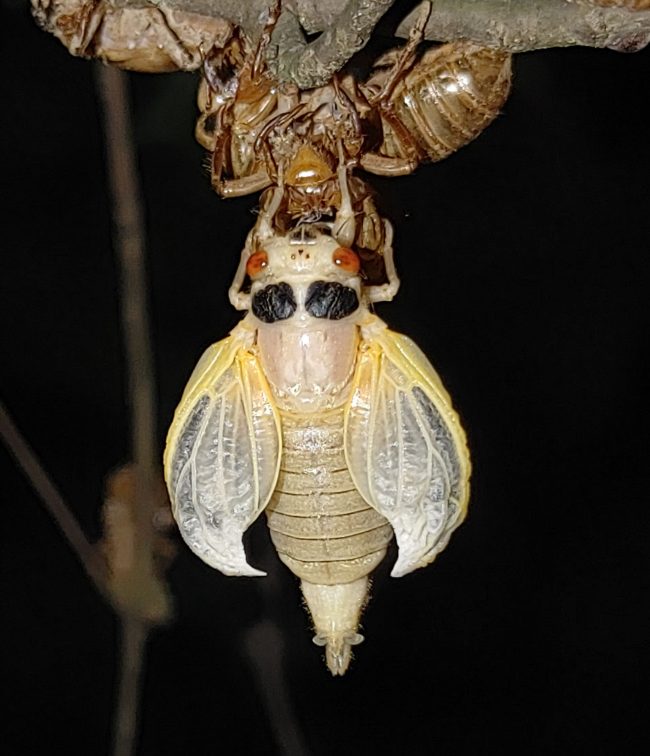
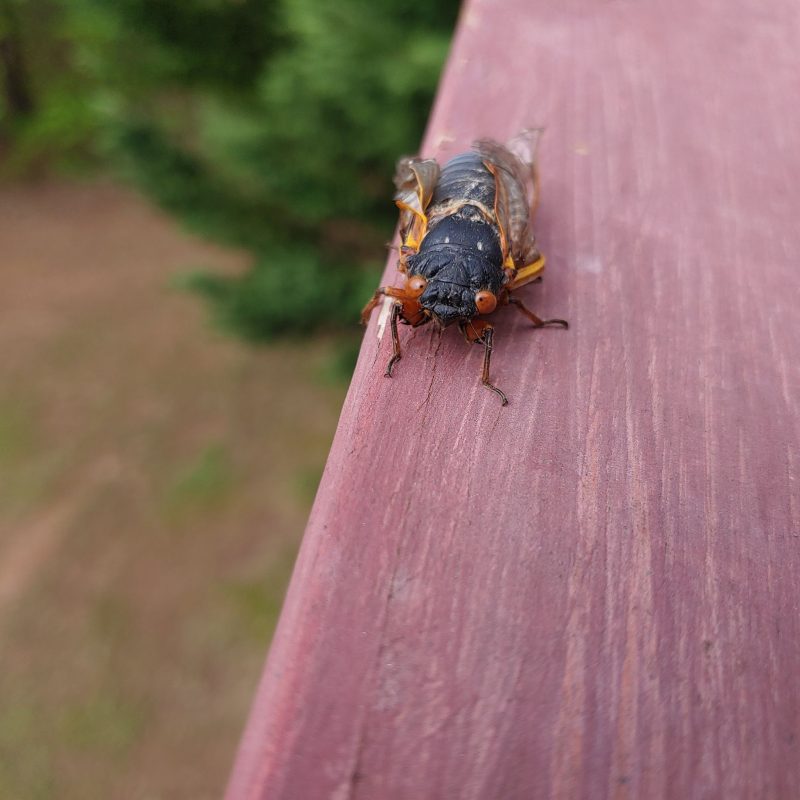
Twitter is besides buzzing with cicada sightings, with posts ranging from people announcing their cicada encounters to odder posts urging those with shellfish allergies not to swallow them.
If y'all want to aid track the emergence of the Breed X cicadas, download the free Cicada Safari app for iOS or Android, and then, when yous see a cicada, snap a photo and submit it to have your cicada added to a live map.
If you lot've spotted a cicada, share a photo of it with us at EarthSky Community Photos.

"Here they come!"
At present the fun starts. This is #one of a few billion that will be popping up in a few days. Yet haven't found the red-eyed large that crawled out of this. I accept a feeling one of the neighborhood birds beat me to information technology. #cicadas@AvaWBAL @TonyPannWBAL film.twitter.com/xpmNpVXgbw— Nib Vanko (@VankoVision) May 10, 2021
My friend in Bethesda merely sent me this film from her neighbor'south tree. They've arrived. #BroodX pic.twitter.com/GoizxppO4U
— Colby Itkowitz (@ColbyItkowitz) May x, 2021
People, the Cicadas are hither movie.twitter.com/oK6DGwqmmU
— Andy Wright (@AndyMcCanse) May x, 2021
If you have a shellfish allergy, y'all should avoid eating the emerging Breed X cicadas in America.
Cicadas are effectively land-shrimp, and reportedly sense of taste like them as well.
(Paradigm: Pmjacoby; CC BY-SA.) pic.twitter.com/kj7ImKFfYO
— Quite Interesting (@qikipedia) May 10, 2021
Over the next month or and so, billions of cicadas volition emerge in a dozen U.S. states, from New York westward to Illinois and south into northern Georgia, including hot spots in Indiana, Ohio, Tennessee, Maryland, Pennsylvania and New Jersey. This group of cicadas, known as Breed Ten (as in the Roman numeral 10) is among the geographically largest of all 17-year periodical cicadas.
Periodical cicadas usually start to emerge in early on- to mid-May when the soil temperature reaches 64 degrees Fahrenheit (18 degrees Celsius). In 2017, a few cicadas emerged as early as Apr 26, but large appearances began on May xvi. The timing of their appearance varies by location, said West Virginia University biologist Matt Kasson. He told the New York Times before this month:
They are ready but waiting for the soil to exist warm enough. The ideal soil temperature for cicadas is about 64 degrees [Fahrenheit]. For the Mid-Atlantic region, that usually comes by about the third calendar week of May, but information technology could exist sooner. Normally, you have stragglers on either side.
Oft, the cicadas will emerge after a soaking rain. If you lot want to monitor soil temperatures where you alive to determine when the cicada emergence volition begin, hither'due south a step-by-step guide on merely how to do it.
For near four to vi weeks afterwards the cicadas sally, woods and neighborhoods will ring with their buzzing mating calls. After the cicadas mate, each female volition lay hundreds of eggs in thin tree branches. Then the adult cicadas will dice. When the eggs hatch, new cicada nymphs (cicadas before they're fully grown) will autumn from the trees and burrow back cloak-and-dagger, starting the 17-twelvemonth cycle once again.
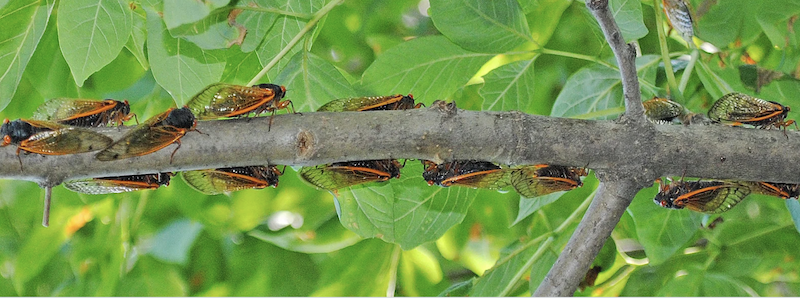
The cicadas won't injure you. They don't sting and they're not venomous. Cicadas become a bad rap because they remind people of the biblical plagues of locusts (a different insect) that would consume entire crop fields. But the cicadas set to emerge this spring in the United States are harmless to humans and won't wipe out fields or gardens.
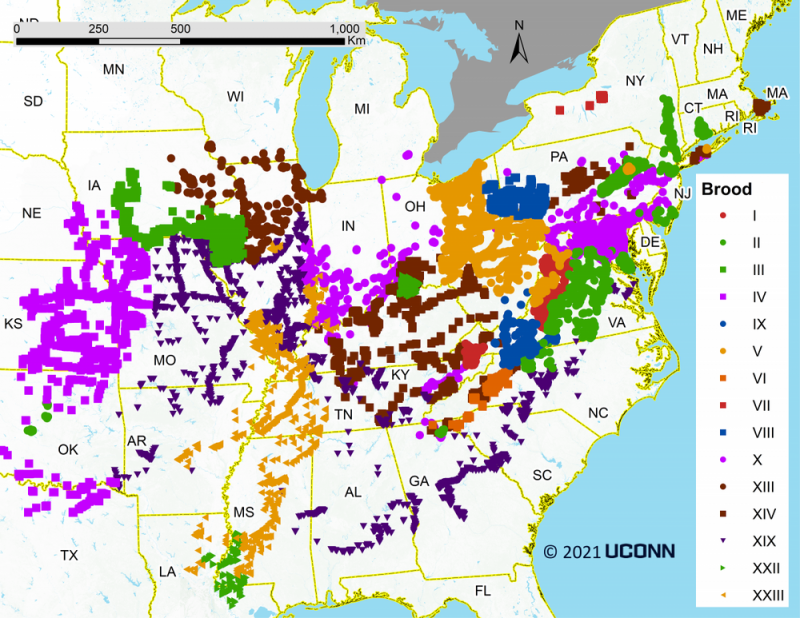
There are possibly 3,000 to four,000 species of cicadas around the world, but the thirteen- and 17-year periodical cicadas are unique to eastern N America.
After 17 years underground, sucking sap from tree roots, the cicadas will surface en masse. Dime-sized holes (about 2 cm) will litter the ground where the emerging nymphs crawl upward toward daylight. The cicadas' only defence against predators is to ascend together in an enormous swarm, overwhelming the predators' ability to swallow them all. This technique is called predator satiation. As many as 1.5 1000000 cicadas per acre (4,000 foursquare meters) tin can cover some areas of the eastern United States.
One time above ground, the cicadas announce their arrival. The main aggravation cicadas inflict on the residue of us is their loud, buzzing mating call. The males head toward the tops of trees and let out a loud whirring dissonance that can fill the air at upwards to 80 to 100 decibels, equal to the intensity of a backyard mower or motorcycle. During the last emergence of the Brood X cicadas in 2004, the PGA's Memorial Tournament in Dublin, Ohio, was awash in the nonstop fizz of cicadas, providing a noisy backdrop to telly coverage every bit the golfers played 72 holes over the form of four days.
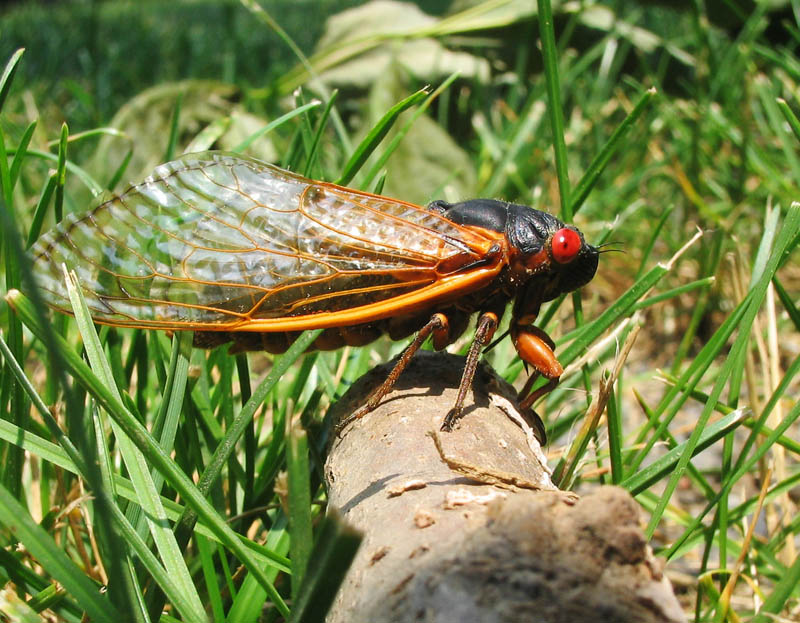
The main harm that cicadas inflict on the landscape comes when female person cicadas drill holes into slender tree branches, where they then lay their eggs. To protect younger or vulnerable trees, encompass them with netting to go on the cicadas away.
The eggs deposited by the females will eventually hatch, producing nymphs the size of a grain of rice. Those nymphs fall off the trees and burrow hole-and-corner, offset their 17 years of subterranean life, while above basis, their parents finish their life stage, the carcasses piling up under trees and on the grass, returning nutrients to the soil that will feed the trees and eventually their children, who dine off the sap of the tree roots.
The whole cycle of emergence, predation, mating, birth and decease volition take place over the course of well-nigh six weeks before the landscape over again returns to its quondam country to wait the next emergence in 2038.
Bottom line: Reports are beginning to come in from D.C., Tennessee, Ohio and more as the 17-twelvemonth journal Brood X cicadas emerge from their subterranean dwellings.
Source: https://earthsky.org/earth/17-year-cicadas-broodx-2021/#:~:text=The%20Brood%20X%20cicadas%20return,after%20a%2017%2Dyear%20absence.
Post a Comment for "When Do Locusts Come Out Again"